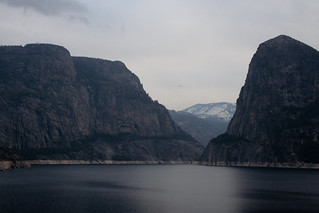 A City Council veto override on Monday has set the scene for a showdown between local and national business interests vs. a labor-community coalition over San Diego’s Earned Sick Day / Minimum Wage ordinance.
A City Council veto override on Monday has set the scene for a showdown between local and national business interests vs. a labor-community coalition over San Diego’s Earned Sick Day / Minimum Wage ordinance.
Following months of public hearings and invitations (mostly declined) for local businesses to hammer out a compromise, the city council passed an ordinance providing access to five earned sick days and setting a local minimum wage increasing to $11.50 over three years.
This action makes San Diego the largest city in the nation to raise the minimum wage.
Mayor Kevin Faulconer–said to be one of the bright new faces in the GOP– then turned thumbs down on the bill on Friday, August 8th. Although the council was slated for vacation for the rest of the month, a special session was called by president Todd Gloria. The 6-2 vote upholding the ordinance surprised nobody.
It didn’t take but a few hours before a well-financed Chamber of Commerce-led group announced it would be collecting signatures to force a referendum on the ordinance, hoping to suspend (until the June, 2016 elections) an increase in pay for an estimated 172,000 local workers, along with denying access to earned sick days to 279,000 individuals.
They have 30 days to gather at least 33,866 valid signatures; National Petition Management has been reportedly hired to do the dirty work. If they fail to make that threshold, the first stage of the wage hikes will go into effect in January with an increase for local minimum-wage workers from $9 an hour to $9.75.
Decline to Sign Campaign
Funded by national restaurant chains and some of California’s biggest donors to Mitt Romney, the Chamber’s “Small Business Coalition” (managed by the right-wing Revolvis political consultancy) is facing off against Raise Up San Diego, which has called for a citywide decline to sign campaign, simply called “Don’t Sign It,” to defeat the referendum against the ordinance.
This attempt at forcing a referendum will be the fourth big dollar effort at overturning council-enacted legislation in the last two years orchestrated by conservative business interests who’ve long been used to getting their way in local government.
As San Diego has faded from being a solidly Republican town to having a Democratic majority among registered voters, the business as usual crowd has turned to well-financed misinformation campaigns run by right wing spin-doctors.
And until now they’ve been on a winning streak, enabled by local media either owned by financiers of these campaigns or incapable of reporting on issues outside the framing provided by the Chamber of Commerce and their allies.
Told, Sold and Lied To
Over the past two years San Diegans have been told, sold and lied to about:
**requiring impact statements on big box store construction,
**reinstating a linkage fee (tied to affordable housing funding) suspended for nearly two decades on big construction projects,
**and creating a barrier between residential and industrial projects in the neighborhood with the highest asthma rate in the state
Each campaign has used numbers pulled out of a bodily orifice to create the impression that people’s job’s would be in danger. The last campaign even went so far as spread stories about the US Navy (a major local employer) pulling out of town.
The local daily newspaper is owned by “Papa” Doug Manchester, known for his financial support of right-wing causes. He was a backer for Dinesh D’Souza’s smear-o-mentary, 2016: Obama’s America.
The Sunday edition of UT-San Diego featured a “news” story giving opponents of the increase major play.
This time around, the Chamber types, hiding behind the ‘money is free speech’ notion, are out to claim they are the defenders of democracy. They are saying the referendum is needed since the City Council passed this ordinance without putting it up for a public vote.
It’s Orwellian beyond Orwellian; Big Money is trying to play the pity card because the City Council did the job voters elected them to do. And they’re claiming the “decline to sign’ campaign is a plot by labor bullies to harass business.
The Raise Up San Diego coalition is taking a stand on this issue. Two-thirds of voters – 63%, according to a recent Greenburg Quinlan Rosner Research poll – support the Earned Sick Days and Minimum Wage Ordinance.
When you have a local oligarchy capable of throwing hundreds of thousands of dollars or more on the table everytime they see something they don’t like, it becomes harder and harder to persuade people to vote in local elections.
And that, my friends, would be the point.
The Rise Up San Diego Coalition
In addition to faith, labor and community groups the Coalition fighting for this minimum wage increase has some high profile supporters in the business sector. Not every business in San Diego’s economy is dependent of a low wage model.
Irwin Jacobs, founder of Qualcomm (a major employer in the area) and Mel Katz (former Regional Chamber of Commerce Chairman) wrote a supportive op-ed, only to have it buried in the Saturday edition (lowest day for readership) of UT-San Diego.
The minimum wage and earned sick leave ordinance passed by a supermajority of the City Council establishes a basic standard of fairness for working people and their families. Our business experience here in San Diego tells us it makes good economic and business sense, too.
The high cost of living in San Diego is well-documented. Full-time work at the California minimum wage of $9 an hour pays $1,560 a month before taxes. In a city where the average one-bedroom apartment rents for $1,032, it’s unrealistic to support one’s self or a family on that wage. Our city minimum wage and earned sick leave ordinance gives an estimated 172,000 San Diegans a modest and gradual raise to $11.50 an hour by the year 2017 plus the ability to earn up to five sick days off per year.
Also well-documented is that increases in salaries of low-wage workers are spent close to home by these workers on basic necessities like food, housing and transportation. In San Diego, that means millions of dollars more circulating and recirculating through the San Diego economy each year and the associated multiplier effect of that spending. Earned sick days means millions more in improved productivity courtesy of a healthier and happier workforce.
Basketball great Bill Walton joined supporters at a press conference last week:
“We stand for a San Diego in which hard-working people aren’t locked in poverty and in which they can earn a few days off a year for when they get sick or need to care for an ill child or other loved one,” Walton said. “We know the vast majority of San Diegans feel the same way, and we urge them to say no to the signature gatherers.”
It’s Time to Fight Back
Those seeking the referendum don’t care that they are literally taking away sustenance from those who need it most.
For Andrea Tookes, a minimum-wage security officer and mother in San Diego, this means another 20 months or more not having to choose between job security and a pay day, and taking care of one her four children when one of them becomes ill and can’t go to school.
“That’s a terrible choice,” said Tookes. “You don’t want to send your kids to school sick. You can’t leave them home alone. And you can’t afford to forfeit pay or give your employer the impression you’re not a dependable employee.”
If you live in San Diego:
1.Take the pledge not to sign the anti-sick days anti-minimum wage petitions.
2. Inform as many people as possible that the earned sick days and minimum wage policy HAS PASSED, and that any signature gathering effort is an attempt to TAKE IT AWAY!! Tell your friends: DON’T SIGN IT!
3. If you see a signature gatherer, call or text the following hotline: (619) 930 – 3300
4. Volunteer.
Progressives in San Diego have used these recent challenges by reactionary elements in big business to increase organizing efforts throughout the community. Although we are outgunned, our numbers and commitment keep increasing; new alliances are being built on the shoulders of previous coalitions.
San Diego used to be a bright red city. Now it’s light blue and getting bluer. The minimum wage drive is just part of the shift. We will keep fighting until we’re BRIGHT BLUE..
Spread the word, my friends. This is going to be an epic battle.
This story was cross-posted at Daily Kos
 Candidates for Governor will face off on Sep 4 in LA
Candidates for Governor will face off on Sep 4 in LA



